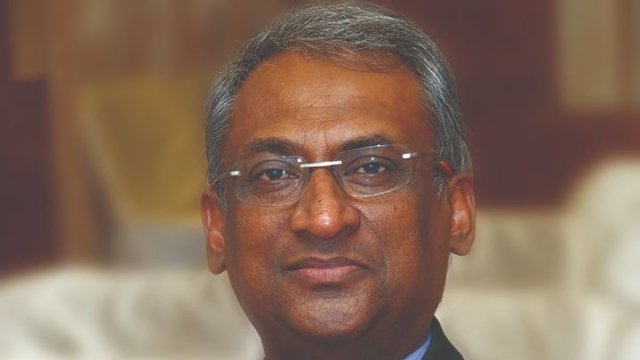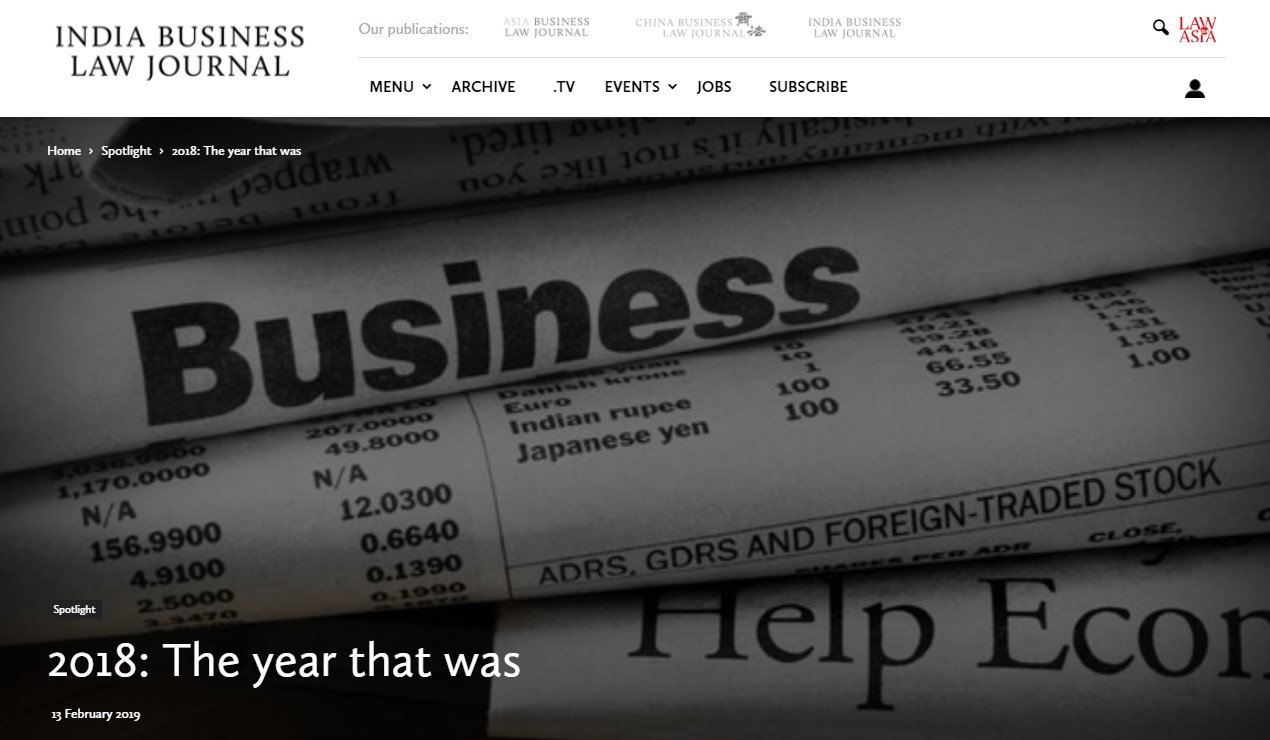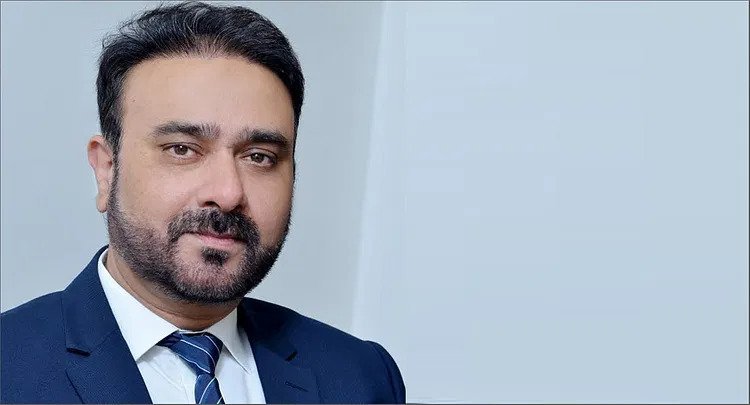Aman Abbas and Anant Ghuge review the major legal issues and policy developments that made headlines in India’s mainstream media
The pages, websites and studios of the mainstream media were buzzing with matters before India’s various courts and tribunals this past year. Notwithstanding issues that have a direct bearing on public interest, many matters that took centre stage would in previous years have found mileage only with the financial media.
So it’s no surprise that in exploring some of the themes that represented the most exciting legal developments in 2018, this article targets issues of policy and law that had a heavy impact on business and featured prominently in the business dailies, magazines and newswires of the nation.
NPAs and the non-partisan dialogue
The big battle among Indian business houses saw many overlook major changes occurring elsewhere. India’s overleveraged banks and the collapse of the shadow banking sector thus took second place behind the battle for family business and their struggles to retain control. The media dialogue revealed a murky corporate world where family-owned conglomerates fought as much to regain control of their assets as their reputations.
The case of Ruias and the Essar Steel insolvency took many twists and turns as the “defaulters” (Essar founders Ruias) sought as much to battle a crisis of control as a crisis of image. Their final rescue bid for Essar came after the insolvency process, where other bids to save the company had surfaced. For legal experts, this caused concern as the procedure versus value maximization debate left courts reeling.
Precedents set in smaller matters, Binani Cement for instance, pitted the letter of the law against the jurisprudential sanctity of enforcement after the National Company Law Appellate Tribunal had allowed a revised bid by UltraTech Cement to be made after the bidding deadline. The tribunal ruled that the aim of the insolvency process is to extract maximum value from the assets, and said the initial top bidder Dalmia Bharat’s bid was “discriminatory” against certain creditors.
Insolvency dominated the headlines, followed closely by liquidity concerns and recapitalization of public sector banks. On the other hand, the insolvency regime created new markets with a number of institutional investors and funds increasing their exposure to India’s stressed asset market. For players such as Vedanta, bidding for steel makers such as Essar Steel meant that a mining company, which extracted the raw material, could now own a steel manufacturer, effectively absorbing the demand side into the supply chain and opening up new avenues and markets.
Real estate found mention under the insolvency code, which seemed to have addressed ₹3 trillion worth of distressed assets. This sector saw the highest significance in terms of public interest and the law, as home buyers fought to be included as creditors under the insolvency code. Infrastructure, too, took a beating with Infrastructure Leasing & Financial Services (IL&FS) coming under the scanner of the Serious Fraud Investigation Office for having under-represented the scale of their non-performing assets (NPAs).
Privacy probably won’t survive
Data privacy captured the interest of both business and consumers. The Cambridge Analytica scandal hit India hard, just as the constitutional validity of India’s unified identity system, the Aadhaar, was being challenged in the Supreme Court. Companies, particularly telecom service providers, were anxiously waiting to see what the Supreme Court would say, and when it finally did, it revealed an overreach by lawmakers, for which telcos would have to pay the price. After the Supreme Court ordered telcos to stop using the Aadhaar-based know-your-customer system to register new users, companies had to revert to the old system, which led to challenges in attracting new customers.
The Indian counterpart of the EU’s General Data Protection Regulation went through as an ordinance, and the law is still in the making. What took more of the spotlight was not compliance, but a breach that had taken place, with the bulk of the leaked accounts in the Facebook scandal being Indian.
The issue sent shockwaves through India’s political sector, with India’s Ministry of Electronics and Information Technology taking the fight to WhatsApp in light of social unrest caused by “fake news” relating to religion, politics and violence among other things being pedalled on the platform.
A cryptic ban
The fight against “black money” took an unexpected casualty. Crypto currencies, a prime suspect in money laundering, were taken to task. The Reserve Bank of India (RBI), following the policy impetus that sanctioned the 2016 currency ban, didn’t have much to say. But users of crypto currencies, who had made the switch to avoid standing in serpentine lines to withdraw cash from ATM machines, were left stranded as their bank accounts were closed with a month’s notice.
On the run
Vijay Mallya had made headlines for the defunct Kingfisher Airlines, but the man that really blew the lid off bank frauds was fugitive Nirav Modi. The cabinet passed the Fugitive Economic Offenders Bill as an ordinance, which enabled law enforcement to seize assets at arm’s length from the fugitive. Alleged close political ties between members of the government and Modi made good fodder for the opposition, while legal and financial minds tried to wrap their heads around the extent of the losses to defrauded banks.
JIO and the telecom disruption
The Indian telecommunications market saw the biggest disruption in decades when Mukesh Ambani-owned Reliance Industries entered the sector with JIO. The scale of the price wars was such that big players like Airtel lost billions of rupees in market capitalization in a matter of weeks, and Aditya Birla’s Idea Payments Bank was forced to merge with Vodafone to stand a chance of survival.
Although many recovered from the early losses and regained lost ground, JIO had undercut the market and regulations needed to be amended to ensure that new entrants could not use a smaller market share to indulge in predatory pricing. On the other hand, the government went to war trying to recover spectrum dues from defunct telecom companies, effectively hindering the sale of stressed assets with demands of bank guarantees.
CCI: Old dog, new tricks
The Competition Commission of India (CCI) is not unfamiliar with antitrust action, having broken up monopolies and taken punitive measures in conservative sectors like cement and tyre manufacturing. In 2018, the CCI took on a whole different animal – big data. It started by taking on the behemoth Google, fining it a hefty ₹1.36 billion (US$19 million) for unfair business practices in the search market.
The commission decided the matter in a lawsuit from 2012, saying it had found evidence of Google infringing antitrust conduct through unfair search bias. The decision made headlines, and while the Appellate Company Law Tribunal stayed the matter, it directed Google to deposit 10% of the fine while the matter was heard.
A key consideration that legal experts pointed out was the CCI’s grasp of what constituted market dominance, not so much in traditional terms but in the burgeoning digital economy where control over data has a bearing on market position. This factor played out extensively when it came to merger control of one of the biggest deals in the Indian economy – Walmart’s acquisition of e-commerce company Flipkart – and in a recent matter where airlines were charged with cartelization based on a pattern of price fixing through aggregators.
Censorship and fake news
A consultation paper issued by the telecom regulator that proposed to regulate over-the-top content received mixed reactions from legal experts. The regulatory impetus was an offshoot of data privacy concerns, which, in an election year, took on the onus of public responsibility towards curtailing fake news. The censorship of the likes of Netflix and Amazon Prime was not so much targeted at the entertainment industry, with its concerns over royalties and viewer certification, as accountability of platforms like Facebook and WhatsApp, which maintain deniability on a perceived lack of regulation of content being circulated by users.
Tech companies responded to myriad concerns over accountability by launching public information campaigns aimed at educating users about responsible use of social media platforms, even as the growing trend towards monetization through targeted advertising on instant messaging platforms undermined some of the core tenets of privacy.
Aman Abbas is the founder and Anant ghuge is a manager at Commwiser Consultants.






 Aman Abbas
Aman Abbas

